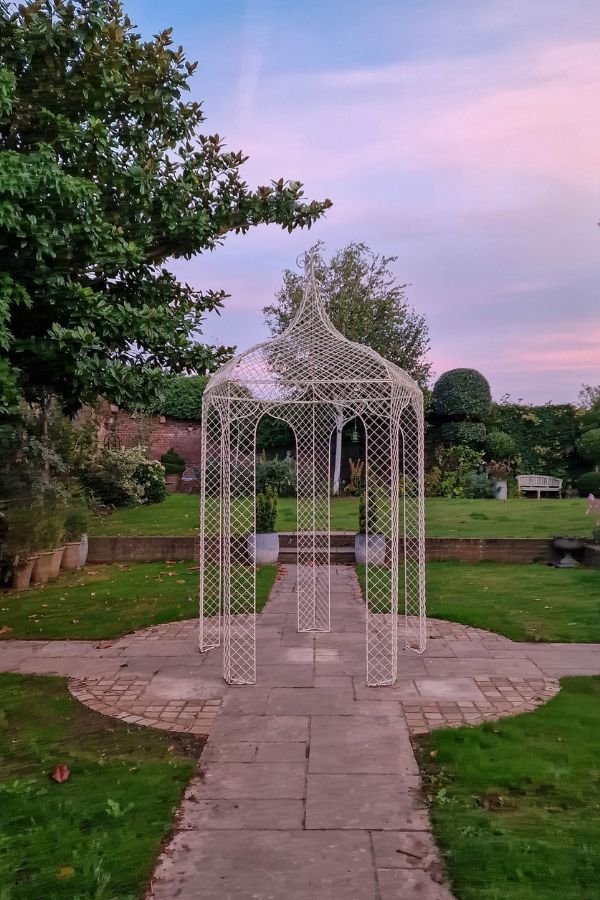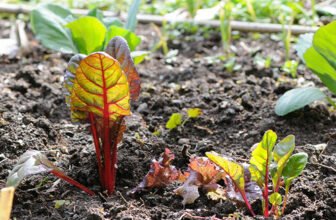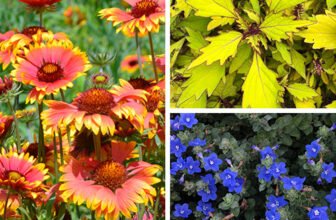
[ad_1]
Are you looking for garden ideas for a difficult part of your garden?
Perhaps you’ve changed the way you use the space or something needs replacing, such as a dead tree or a rotting shed?
Or you’d just like more wow factor as you step out the back door or look out of the window?
Garden designers would advise you to consider your garden as a whole. And, of course, they’re right.
But unless you have the budget to have your entire garden re-vamped, most of us tend to renovate our garden bit by bit.
This is a two-part post. In this first part, I’ll look at ideas for the area closest to the house, because this is what you see when you look out of the window or step out of the back door.
Part 2 will look at garden ideas for difficult corners and neglected areas.
Garden ideas for the outdoor space closest to the house
One tried and tested garden design tip is to have the neater, more formal or structured areas close to the house.
Then, even if you have quite a small garden, you can vary the feel, with a wilder or more open areas further away from the house. This is what we decided to do.

We divided our garden into a formal, structured area – which we call the parterre – close to the house. Then the back of the garden is more open and wild.
When we moved in the garden was sloping, so we decided to make a formal clipped lawn area which we call the parterre. It’s divided into four with paths to echo the four rooms on the ground floor of the house.
And the other good design tip is to echo the house’s materials or architectural features close to the house.


In this garden, designed by Posy Gentles, the colour of the fence echoes the paint colour of the window and the pale flagstones reflect the interior flooring. See more of this garden in How to design a shallow wide garden.
Remember the principle of mass v void
One of the most basic principles of garden design is that you need a balance of mass and void.
This means balancing out the flat areas, such as the lawn, terracing and paths, with three-dimensional elements such as trees, shrubs, sheds and pergolas.
You can find out more about this in the principles of garden design.
When we first redid the garden, which was nearly 15 years ago, an artist friend said he thought we needed to add height in the middle. He suggested a pergola, but when we researched them, the ones we liked were over our budget. And we didn’t really like the ones we could afford!
…and the principle of time vs money
This takes me to something I’ve noticed about garden design – there’s a direct correlation between time and money. If you want an instant transformation, it’s likely to cost you.
It’s cheaper to grow plants from seed or propagate, but it’ll take longer. And the only way to make landscaping cheaper is to DIY your walls, paths and terraces, which means taking the time to learn how to do it properly.
If you want to find exactly the right pergola, gazebo or item of garden furniture, it’ll usually take quite a while to find one you love at a price you can afford. But if you keep an eye out on reclamation sites, social media auction sites and generally around friends, you may be able to find something special for less. There are some tips in 15 ways to transform your garden with upcycled junk.
This is why costings on garden makeover TV programmes are so misleading. They usually fail to cost in the labour element or some other factor. Most garden designers say you should multiply budgets on garden TV makeover programmes by at least 4! See this post for realistic ideas on how to save money on garden design.
Garden ideas for a central space
So we couldn’t leave our parterre empty while we searched for the perfect pergola. Here are some of our options, plus a few other ideas.
- Planting – trees, shrubs and other planting add mass for relatively little money.
- Pots – We added a group of pots to the centre, filled with easy, long-flowering nepeta
- One striking pot. We bought a large topiary spiral, which was a major investment (around £120 and it’s probably more now)
- You could add sculpture
- A central pond
- A central mini pond
- A rill down the middle
- A path down the middle (but think about the overall mass/void issue.).
- Seating area
- Trees in the middle of a garden
Three solutions to ‘mass vs void’


This space (2012) is clearly too much ‘void’ (flat area) and not enough ‘mass’. The tiny plants you can see grew into large lavender plants after a year or so. The pots provide the only real ‘mass’ but they still look a small in the space.


From 2015 we put a large topiary spiral in the centre, with grasses in the other pots. The lavender has also grown to add mass. We kept our lavender in shape by cutting it back hard (see how to prune English lavender beautifully).


From 2019-2022, we had a sundial centrally with the large lavender beds providing most of the ‘mass’.


Finally, we found a second-hand vintage pergola we liked and it is now installed, adding height and ‘mass’ to the centre of the garden. Planting to follow!
More garden ideas


Add a small or large pond to the centre of your garden. Always consider access with a pond – a pond at ground level can be a hazard for babies and toddlers, while a raised pond can be difficult for wildlife to access. However, you can protect ponds with a grid and help wildlife in various ways (see how to create a container pond).


We’re often warned against putting a central path down the middle of a garden or lawn because it can just split the garden into two without adding anything. But if you’re generous with both the path and the planting on either side, it can work well. Just remember the principles of mass and void – these show gardens from RHS Chelsea Flower Show (top) and RHS Hampton Court wouldn’t look as good if there was lawn on either side of the path.


In a small garden, the central area can be used for seating. It’s usual to have the seating area directly outside the back of the house, but the centre of the garden can also be a good place for it, especially in smaller gardens. Charlotte Rowe advises thinking about different places for your seating in 5 garden design tips.


A fountain makes a formal centre to the garden as with this ‘Charleston Garden’ at the RHS Hampton Court show. See this and more garden ideas in this RHS Hampton Court round up.


Add a tree or trees to the centre of your garden. This shallow wide garden, designed by Posy Gentles, has two fruit trees which break up the middle of the space. See how this works in designing a wide shallow garden.
You can see more detail on these garden ideas for our central parterre and the other ideas in this video here.
Pin to remember beautiful garden ideas for different parts of the garden
And do join us – sign up here for a free weekly email with more gardening tips, ideas and inspiration.


[ad_2]






